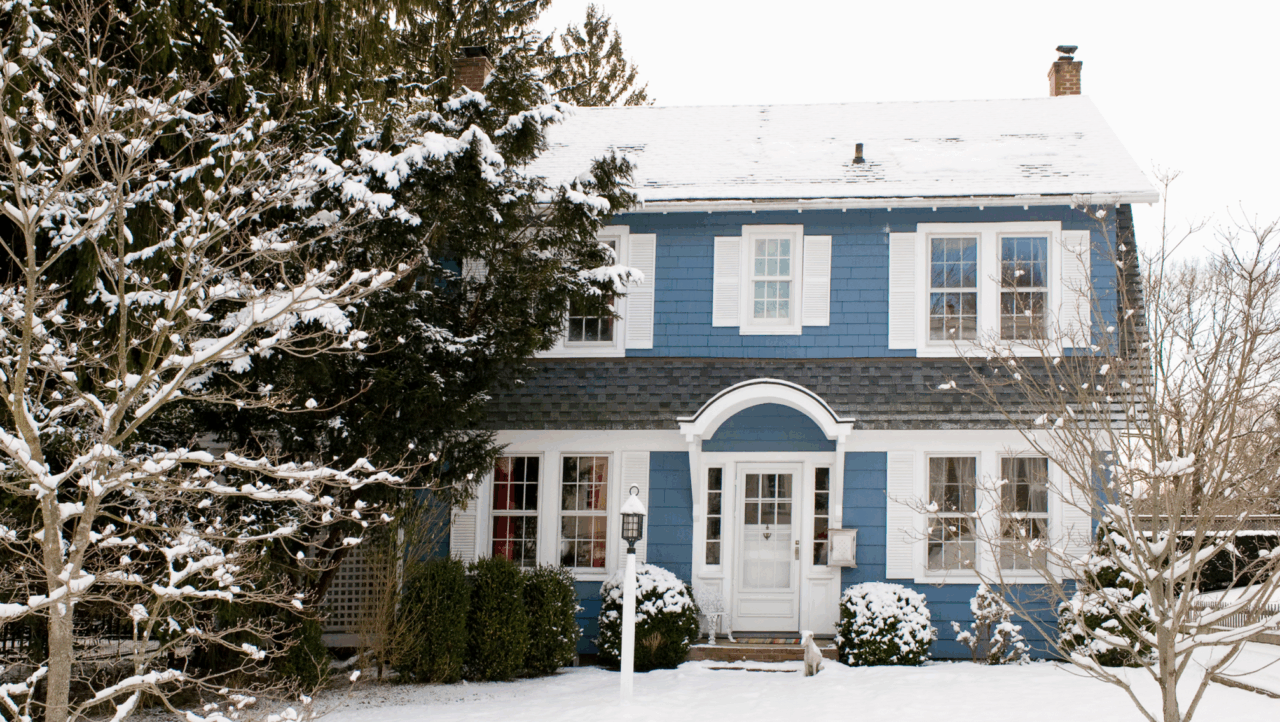Should I Sell My House Now or Wait Until 2026?
Local markets vary widely when it comes to real estate trends. Knowing what’s going on in your local market can help you decide whether selling now is right for you.


Written by Susan Kelleher on February 18, 2025
With peak home shopping season around the corner, those of you who have been thinking about selling may be wondering if 2025 is the year to do it.
While there’s no right answer for everyone, sellers still enjoy an advantage in many markets, even as the national picture trends toward a neutral market that favors neither buyers nor sellers.
“Sellers have a lot going for them right now,’’ says Zillow Chief Economist Skylar Olsen. “Home equity is near record highs, and the general economy and financial markets are surprisingly strong.” And, she notes, “homes are selling faster than they did before the pandemic.”
If you’re thinking of selling, read on to see what’s happening in the market right now, and how those dynamics might figure into your selling decisions.
Five factors affecting the seller's market
Rising home values
Home values are up from a year ago in 41 of the 50 largest U.S. metros. Nationally, they’re expected to grow by 0.9% in 2025, a softer pace than the past four years.
The local picture, though, is what matters if you’re selling, and that’s a mixed bag. Some markets are racking up big gains, while others are losing value. Which way your market is moving is a sign of buyer demand, and will affect how long it takes you to sell and for how much.
Annual price gains are highest in San Jose (8.1%), Providence (6.7%), Cleveland (6.6%), Hartford (6.3%), and New York (6%). Eight major metros had the biggest drops: Austin (-3.4%), Tampa (-2.8%), San Antonio (-1.8%), New Orleans (-1.1%), and Jacksonville (-0.9%).
Quick sales
Homes are still selling pretty quickly overall. Again, the local picture varies widely. For instance, in San Jose and Hartford, a typical home went from listing to pending in nine days in January, while the typical home in Miami and Jacksonville took 65 days to get an offer.
In the U.S., a typical home went from listing to pending in 38 days in January. That’s nine days slower than the same time last year. The slower pace — especially in Southern markets, may be due to the extreme and extremely odd weather over the past years, and to rising insurance premiums in Florida and Texas, Olsen says.
Price adjustments
The number of sellers who cut their prices after listing their home for sale remains high in some areas. In January, nearly 23% of Zillow listings nationally recorded price cuts, the highest share of any January since 2018. The local picture, however, was all over the map.
Phoenix logged the largest share of cuts among the nation’s 50 largest metros, with 34% of listings cutting prices. New York had the fewest (12%).
On the flip side, 1 in 4 sellers sold their homes for more than they were seeking in December 2024. In some markets, the share of homes that sold above list price was higher than those that sold as listed. In Hartford, for example, an astounding 62% of homes sold for more than their owners were asking. Miami had the fewest, at 8%.
If you’re selling, you should understand that selling for top dollar is not a given, even in a seller’s market, and that working with a good agent to develop a selling strategy can help you get the best return.
More competition among sellers
More sellers are listing their homes, which means there’s going to be more competition in most major markets. Only one of the 50 major metros — New York — had a drop in the number of homes for sale; the rest logged year-over-year increases ranging from 2.5% in Boston to 40% in Denver.
Compared to this time last year, the number of homes for sale in the U.S. rose 17.6% and new listings rose 11.5%. The bump in listings has helped shift the market away from the super-charged sellers markets of the past few years into more neutral territory.
New listings are rising the fastest year over year in expensive Western markets, led by Portland (up 48%), Seattle (40%), Denver (34%), and San Francisco (32%).
Volatile mortgage rates
Real estate is a seasonal business that picks up in the Spring and slows down in the Fall. But mortgage rates can create their own “buying season,” pulling buyers into the market when rates drop since the lower rates make homes more affordable.
Interest rate volatility can make it harder to price a home since rate changes play such a large role in what buyers can afford. For example, let’s say you price your home to sell at $360,000. If mortgage interest rates are 6%, a buyer putting 20% down toward the purchase would pay $1,727 a month in principal and interest on a 30-year-fixed rate mortgage. Raise the interest rate to 7%, and the mortgage payment rises to $1,916 – a $189 monthly difference. In more expensive markets, even small increases in rates can make an otherwise affordable home unaffordable. This is why it’s important to keep an eye on rates as part of your listing strategy.
Mortgage rates ticked up to 7.04% in January, the highest level since May 2024 and significantly higher than the mid-6% rates seen a year ago. Zillow economists predict that rates will remain volatile and finish the year around 6.4%.
Reasons to sell your house now
If you’re weighing the decision on whether to sell, here are some potential upsides to selling in 2025.
1. Favorable market conditions for sellers
According to Zillow research, most sellers — 78% — say a major life event such as landing a new job or a change in family size, influenced their decision to move. If that’s the case for you, you’re probably going to be buying another home (54% of sellers are). The fact that many major metros have become neutral — favoring neither buyer nor seller, could be a net plus for you, especially if you’re moving to a less expensive home or city.
Nationally, the super charged sellers market of the past four years has become a neutral one. In some local markets, however, buyers have an edge. If you’re still in a sellers market — or even a neutral one — you’re less likely to have to give buyer concessions to close a deal. Knowing your local market conditions can help you assess the benefits of selling you as you think through your options.
See the full list of seller's markets, strong seller's markets, and buyer's markets on Zillow's Market Heat Index.
2. High resale value
If you bought your home prior to 2020, there’s a good chance you’ve built up equity in your home. Home values are up 44% compared to before the pandemic and have risen 2.6% year since a year ago.
Unless you tapped that equity already for a remodel or to pay for college or other debts, your share of the ownership could provide you with wiggle room when it comes to negotiating with buyers who are facing some significant affordability challenges. And if you’re also looking to buy your next home, you can tap that equity for a down payment at a time when more sellers are listing their homes and competition among buyers is softening.
To calculate your home equity, subtract the amount you owe on your mortgage from the current value of your home. For example, if the home you bought for $250,000 is now worth $350,000 — and the balance on your mortgage is $150,000 — you have $200,000 in home equity. When you sell, you’ll have to pay the costs related to selling, like closing costs, agent commissions and any home improvements needed before you list. So be sure to take those into account when figuring out how much you’ll gain if you sell.
3. Home value growth has slowed
Although home values are still growing in most markets, the pace has slowed. Unless mortgage interest rates rise, this means that fewer buyers will be sidelined by rapidly increasing prices right now and can have more confidence in their homebuying budgets.
4. Life changes
If your home no longer suits your needs, selling allows you to upgrade. It may be life circumstances that require you to move. Or it could be that moving for a new job makes financial sense. Or maybe you’re downsizing and looking for a warmer — or colder — place to land in your retirement. Or perhaps you found a different home that’s more suited to your needs. Whatever your reasons, you may find that selling will get you to where you need to be.
5. Competition is heating up
The number of homes for sale remains at historic lows, but it’s been steadily beefing up, especially over the past few months. This could mean that, in most markets, you won’t have a ton of competition from other sellers right now, but will have more if you wait. And if you’re also buying a home, there’s a good chance you’ll have more homes to choose from than you did at this time last year since listings are up in most major metros.
Homes are still selling rapidly in many markets, but homes are staying on the market longer. As more listings come on the market, that is likely to lengthen. If you need to sell quickly, that could be an issue.
6. Mortgage rates
Mortgage rates are notoriously hard to predict. For the past year or so, they’ve stayed in the range of 6% to 7% as the federal reserve got inflation under control. If inflation returns, rates are likely to rise, which could make it harder to sell your home, and would cost more if you’re buying a new one with a mortgage.
7. Ownership costs related to climate risks
Zillow research shows that more than 80% of home shoppers consider climate risks when looking for a new home. Homes in many areas with climate risks are still in demand, but climbing insurance costs in some of those areas could continue to raise the costs of ownership for you.
Reasons to wait to sell your house
1.You can’t afford to sell
If you owe more on your home than its worth, you’re going to have to bring money to the table to close the deal — or get permission from your lender to sell it for less than you owe (called a “short sale.”). In that case, it might benefit you to wait until you build more equity. When a homeowner owes more than their home is worth, they are said to be “underwater” or have “negative equity.”
2. Relocation challenges
Given the variability of local market conditions, it may be easy for you to sell but difficult to find an affordable home in the area you want to move. In that case, you may want to wait until you’ve saved more for a down payment on your next home or wait for greater mortgage rate stability.
3. Unable to move nearby
If your home value has soared in recent years, so, too, have other homes in your area, which can make it hard to buy in your same neighborhood.
If you’re planning to tap the equity in your home to buy a new one, be sure to calculate the costs of selling to estimate your proceeds. Once you have an idea of what you’ll be able to put down on your next home, use an Affordability Calculator to determine how much home you can afford.
You also can use Zillow’s BuyAbility tool, which gives you a personalized estimate of your home buying budget based on your financial situation and current interest rates. The tool shows you how much you may qualify for given your financial situation and your credit score, and allows you to search for homes that fit that criteria.
4. Unfinished home projects
Unfinished projects or necessary repairs may require time and investment before selling. If you don’t have the skills, the time or the money to tackle them, you may have a harder time selling your home — and you could be selling for less than you’d receive if the house was in move-in condition for the next buyer.
In most states, you’ll be required to disclose known issues in your home, including structural issues, past water damage or lead paint. Big ticket items can deter buyers. If timing is an issue and you want to avoid delays, be sure to consult your real estate agent or real estate attorney to determine what you are required to disclose to buyers.
Buyers usually want a home inspection before they finalize their purchase. If the inspector discovers issues, the buyer could ask you to make the repairs before closing, reduce your listing price or offer a credit at closing. Depending on the severity of the issues, this could cost you hundreds or even thousands of dollars, which is why many sellers resolve known issues before listing.
5. Timing constraints
Selling involves moving, and it can take time to fix up your home and get everything ready for prospective buyers to tour it. Also, if your home requires months to update and repair before you can sell it, you could easily miss the best time of year to sell for your market. You may also feel a time crunch if you’re trying to align your sale with the purchase of another home or if you’re relocating for a job.
6. You want to avoid in-person showings
Keeping a home clean and ready to show to prospective buyers can be a challenge, especially when buyers ask for showings at inconvenient times. If you have children and pets, it can be stressful to vacate for those showings.
Creating a comprehensive online listing with tools like 3D Home tours, interactive floor plans and virtual tours could help reduce the number of prospective buyers inspecting your home in person, allowing you to focus those visits on buyers who are especially interested in your home.
Still, only a small number of buyers purchase a home without stepping inside it first, so you should think about whether you have the bandwidth for showing.
7. You’re living in a buyer's market
Local market conditions may not favor sellers, making it harder to sell for the price you want. You also may be fielding offers that ask for seller concessions, such as paying closing costs or setting aside money for the buyer at closing to pay for needed repairs.
The bottom line
If you’ve decided that 2025 is a good time to sell, and want to sell quickly and for the most money, now is the time to start prepping your home so it’s ready to list during peak selling season.
“Get those landscapers scheduled as soon as weather permits, and in the meantime indoor improvements can add to your home value,’’ says Olsen. “Exterior paint and final curb-appeal projects can also happen when the weather warms up.”
Selling your house is a personal decision influenced by various factors. Consider your financial situation, local market conditions, and personal needs when deciding the best time to sell.
Tags
Ready for a new address?
Get an instant cash offer or list with a local partner agent.
Explore selling optionsRelated Articles
Sell your home with a winning strategy
Here’s how to maximize your home sale with the right selling plan.

Build a smart selling plan
Talk to your agent about their marketing approach - especially online - to ensure you’re getting the best possible price for your home.



